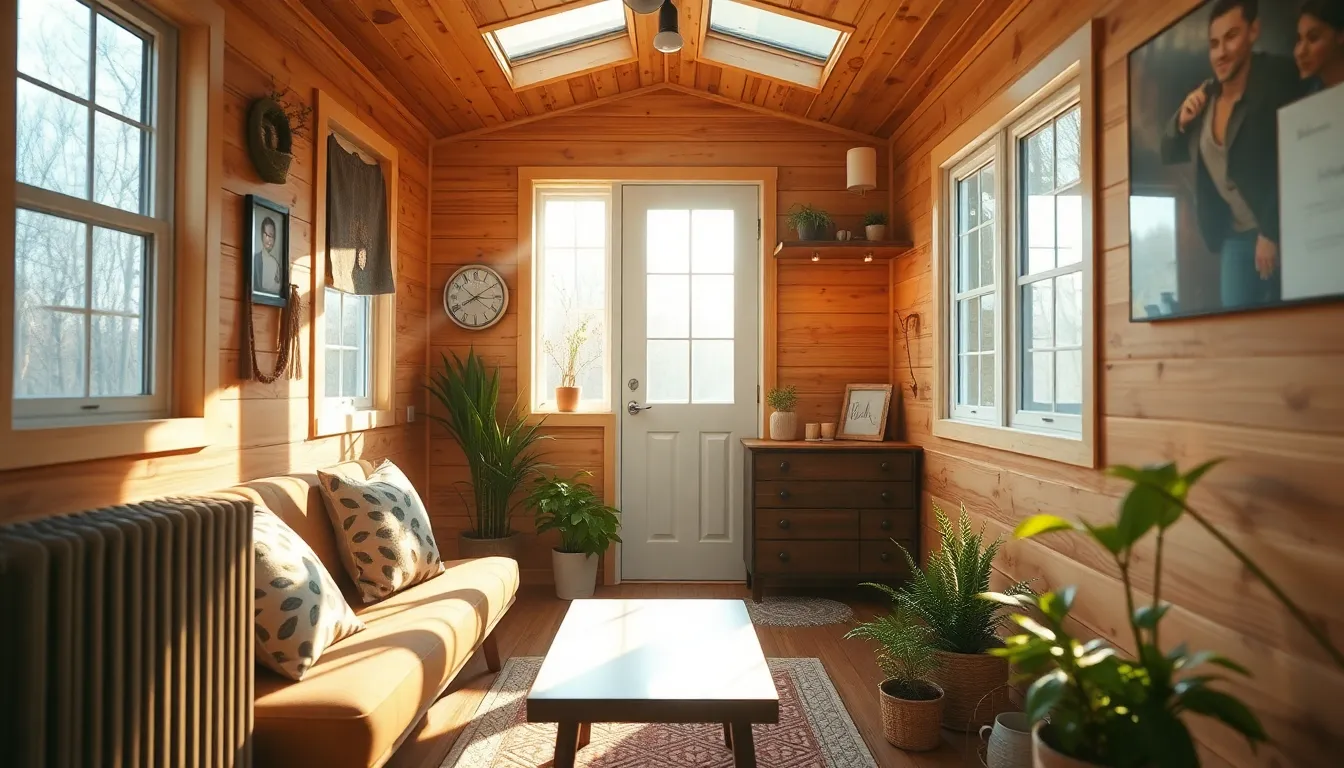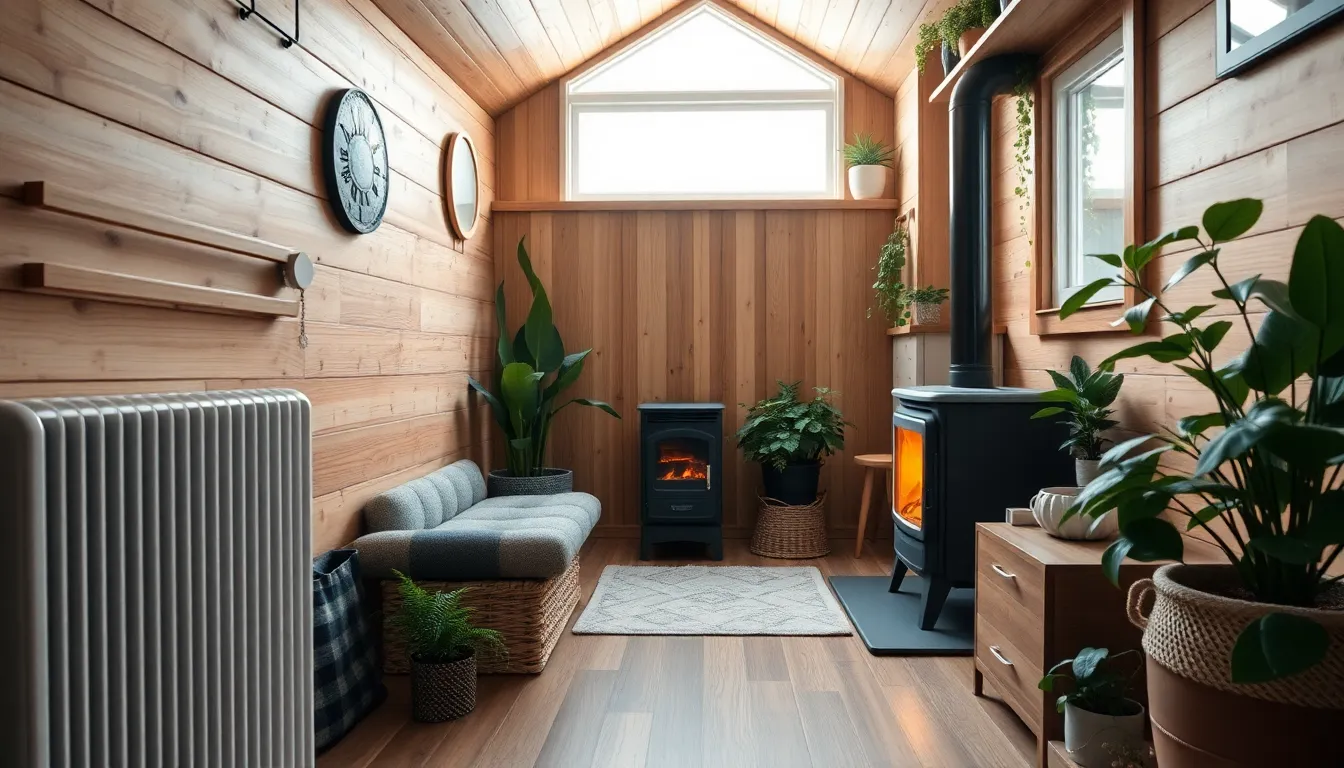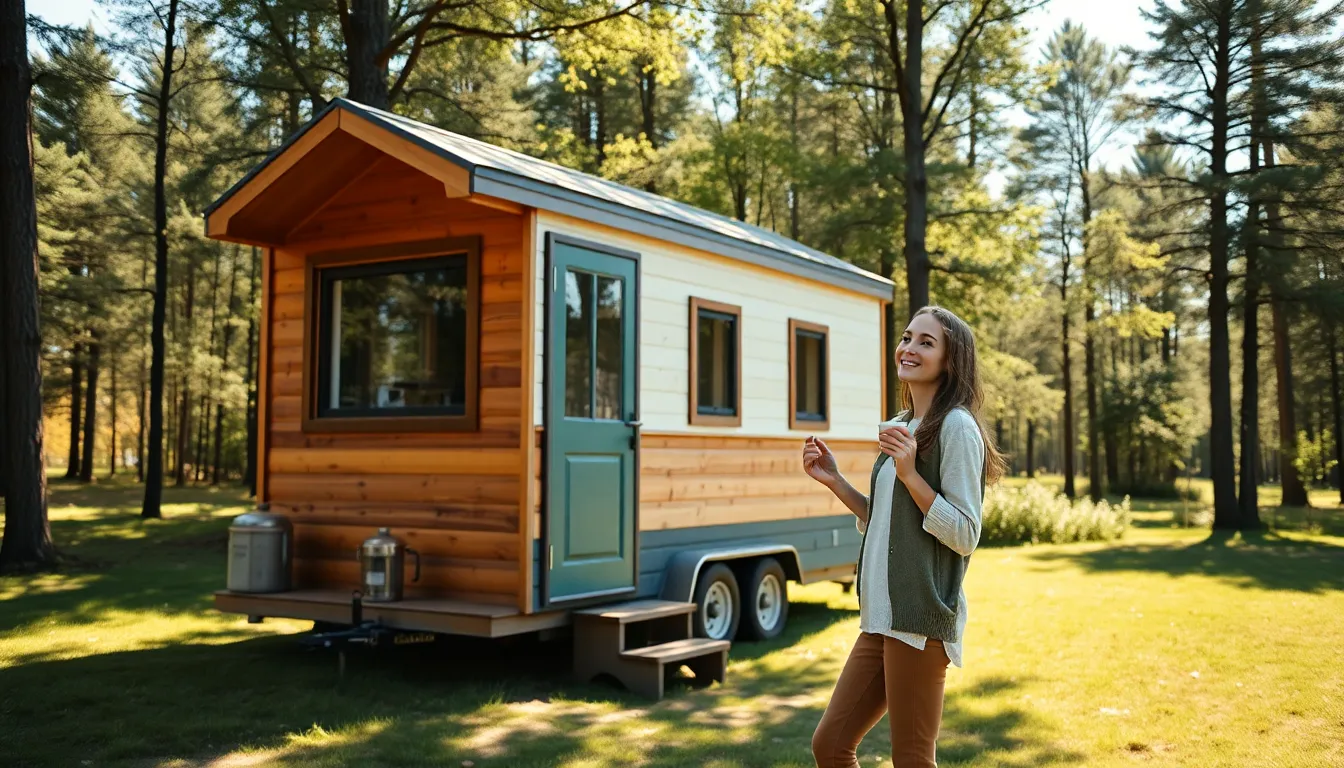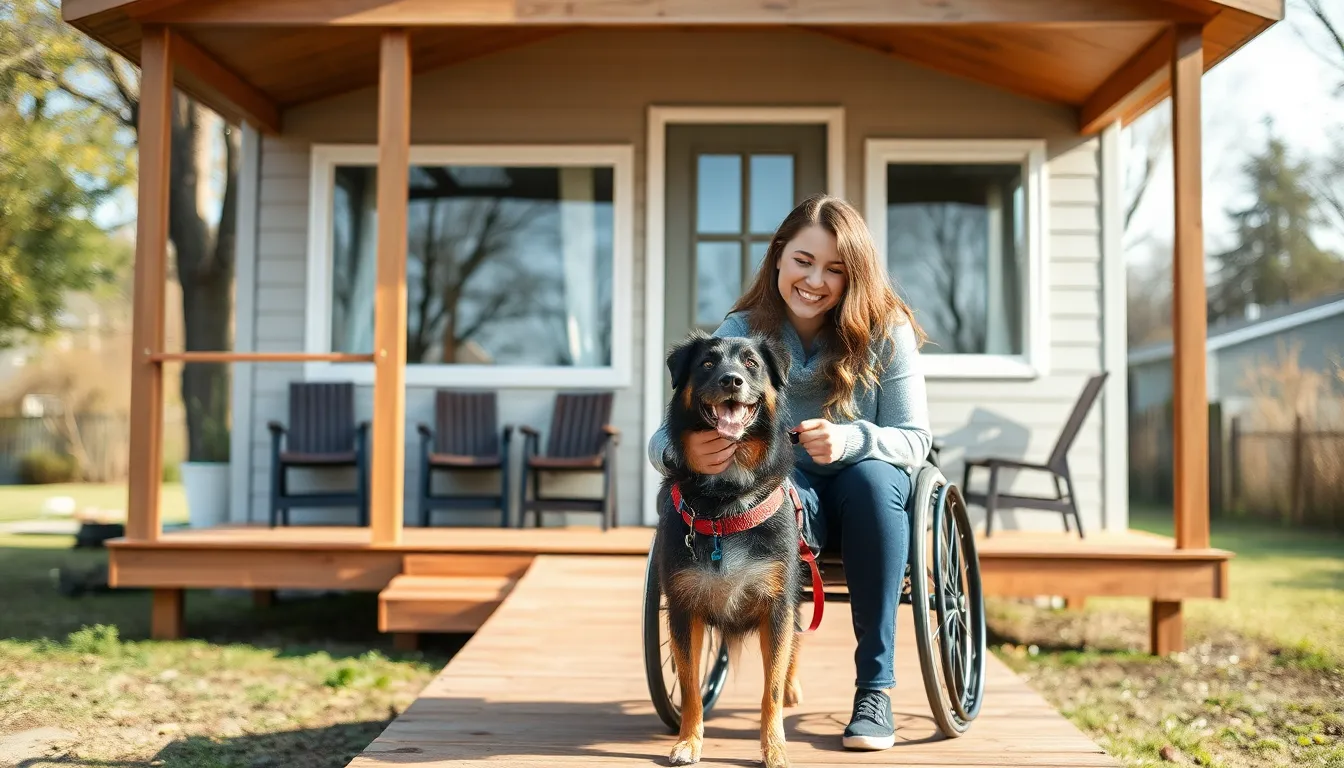Living in a tiny house is like embracing a cozy hug from Mother Nature, but what happens when that hug turns into a sweaty squeeze? Climate control in these pint-sized palaces is crucial. It’s not just about keeping cool in summer or warm in winter; it’s about creating a sanctuary that feels just right, no matter the season.
Imagine curling up with a good book in a perfectly temperate nook, rather than sweating like a popsicle in July. With the right climate control strategies, tiny house dwellers can transform their compact spaces into comfortable retreats. Let’s dive into some clever tips and tricks to beat the heat and embrace the chill, ensuring that tiny living doesn’t come with a side of discomfort. After all, who wants to live in a sauna when they could be living in a stylish, climate-controlled haven?
Table of Contents
ToggleOverview of Tiny House Climate Control
Tiny house climate control ensures comfort throughout the year. Effective temperature management addresses challenges presented by limited space and changing weather.
Importance of Climate Control in Tiny Houses
Climate control significantly impacts the quality of life in tiny houses. Maintaining comfortable indoor conditions influences both health and mood. It prevents issues such as mold growth during humid months and frost damage in winter. Strategies such as insulation and heating systems help maintain steady temperatures. An optimal living environment attracts those seeking sustainable and efficient lifestyles.
Factors Affecting Climate Control
Several factors influence climate control in tiny houses. Location plays a crucial role; areas with extreme temperatures often require robust systems. The size and design of the house also dictate airflow and heat retention. Materials used in construction impact insulation effectiveness. Appliances and solar panels contribute to overall energy consumption and climate management. Each of these elements combines to create a comfortable home in compact living spaces.
Heating Solutions for Tiny Houses
Heating solutions are crucial for tiny houses, ensuring comfortable living during cold months. Various systems exist, each with unique advantages tailored to compact spaces.
Types of Heating Systems
Electric heaters, such as space heaters, provide instant heat. Wood stoves offer cozy warmth and a traditional feel, suitable for off-grid environments. Propane heaters deliver efficient heating while being compact. Radiant floor heating circulates warmth through the flooring and maintains a steady temperature. Mini-split systems allow for both heating and cooling, adapting to changing weather conditions. Each option caters to different preferences and needs, helping residents choose the most suitable solution for their tiny homes.
Energy Efficiency Considerations
Energy efficiency plays a vital role in selecting a heating system. Energy-efficient systems reduce utility costs while maintaining comfort. Look for units with high Energy Star ratings, which indicate advanced performance. Proper insulation enhances heating efficiency, preventing heat loss. Utilizing programmable thermostats can optimize heating schedules, reducing wastage. Relying on renewable energy sources, like solar panels, further decreases energy consumption and enhances sustainability. Prioritizing these factors ensures warmth without excessive energy expenditure.
Cooling Options for Tiny Houses
Effective cooling options enhance comfort in tiny houses, especially during hot months. Selecting the right system requires understanding various choices available.
Air Conditioning Systems
Air conditioning systems, including window units and mini-split systems, offer efficient cooling solutions. Mini-split systems provide targeted cooling, allowing control over each room’s temperature. Window units fit well in small spaces, providing simplicity and easy installation. Ductless systems offer flexibility, improving aesthetics while ensuring effective airflow. Energy-efficient models minimize electricity consumption, maintaining comfort without high utility bills. Choosing units with high Energy Star ratings ensures optimal performance and lower environmental impact.
Natural Cooling Methods
Natural cooling methods present sustainable alternatives to mechanical systems. Cross-ventilation allows fresh air to circulate, reducing indoor temperatures. Strategic placement of windows promotes airflow, while using window films or shades blocks heat from direct sunlight. Planting trees or using outdoor awnings creates shade around tiny houses, lowering heat gain. Insulating roofs and walls helps regulate temperature, enhancing comfort levels. Utilizing fans for air movement eliminates the feeling of stuffiness, making living more pleasant during warm days. These natural methods lower energy costs while maintaining a comfortable living environment.
Insulation Strategies
Insulation plays a vital role in climate control for tiny houses. Effective insulation strategies help maintain comfortable indoor temperatures year-round.
Insulation Materials
Common insulation materials include fiberglass, foam board, and spray foam. Fiberglass batts suit many tiny house structures with ease of installation and effectiveness. Foam board provides superior thermal resistance and works well in tight spaces. Spray foam expands upon application, sealing gaps and minimizing air leaks. Each material offers unique benefits that enhance energy efficiency while regulating temperature.
Proper Installation Techniques
Correct installation techniques ensure insulation’s effectiveness. Start by sealing air leaks around windows and doors to prevent drafts. Place insulation snugly between wall studs and ceiling joists for maximum thermal performance. Employ an airtight vapor barrier in humid areas to reduce moisture buildup and mold risks. Inspecting for gaps or compression in insulation often avoids potential heat loss or gain, ultimately maintaining comfort levels. Proper techniques maximize the insulation efforts in tiny homes, enhancing overall climate control.
Ventilation Techniques
Effective ventilation plays a crucial role in maintaining a healthy and comfortable environment in tiny houses. Proper airflow helps regulate indoor humidity and temperature, supporting overall well-being.
Importance of Ventilation
Ventilation minimizes the risk of moisture issues, such as mold growth, which can pose health risks. Adequate airflow reduces indoor pollutants, ensuring fresh air circulation throughout living spaces. Good ventilation also enhances energy efficiency by preventing over-working heating and cooling systems. Establishing a balanced exchange of air, especially in environmentally friendly tiny homes, directly influences indoor air quality. Homeowners should prioritize ventilation strategies to achieve a comfortable and safe living experience.
Types of Ventilation Systems
Mechanical ventilation systems include exhaust fans, energy recovery ventilators (ERVs), and heat recovery ventilators (HRVs). Exhaust fans remove stale air, often found in bathrooms and kitchens. ERVs and HRVs recover energy from outgoing air, transferring it to incoming air, which maintains indoor temperature stability while providing fresh air. Natural ventilation relies on passive systems that encourage airflow through strategically placed windows, vents, and openings. Cross-ventilation, where wind direction facilitates air movement, enhances cooling and makes tiny homes more energy efficient. Selecting the right system depends on individual needs, climate, and the design of the tiny house.
Conclusion
Tiny house climate control is vital for ensuring a comfortable and enjoyable living experience. By implementing effective insulation heating and cooling strategies homeowners can significantly enhance their quality of life. The right combination of systems and materials not only maintains ideal temperatures but also promotes energy efficiency.
Proper ventilation plays a crucial role in preventing moisture issues and supporting overall well-being. With careful planning and consideration of individual needs and environmental factors tiny house dwellers can create a cozy atmosphere year-round. Embracing these climate control solutions makes tiny living not just feasible but truly enjoyable.









